overleaf template galleryCommunity articles — Recent
Papers, presentations, reports and more, written in LaTeX and published by our community.
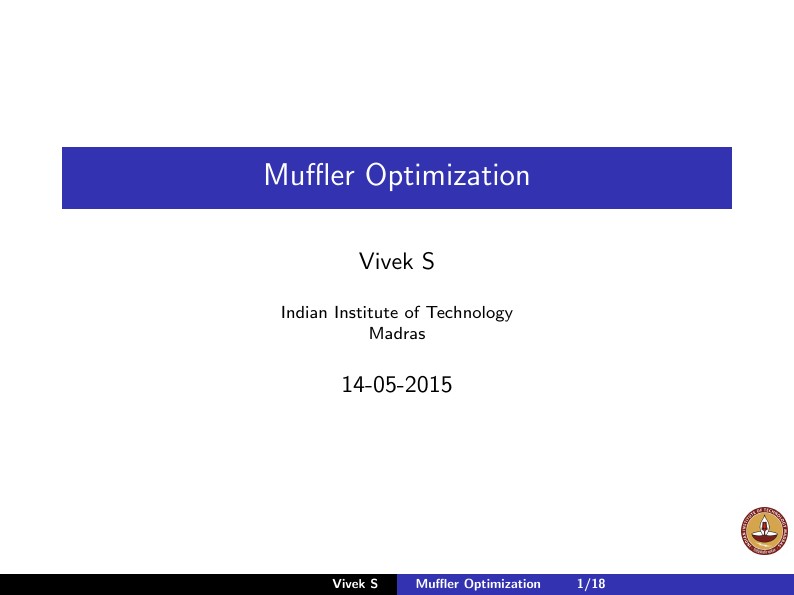
Maximization of muffler performance is important, but there is always space volume constraints. Shape optimization of multi-segments Muffler coupled with the GA searching technique. Outline: Problem Statement Derivation of Four Pole Matrices and an expression for STL Introduction to GA and it's Implementation A numerical case of noise elimination on pure tone Results and Discussion
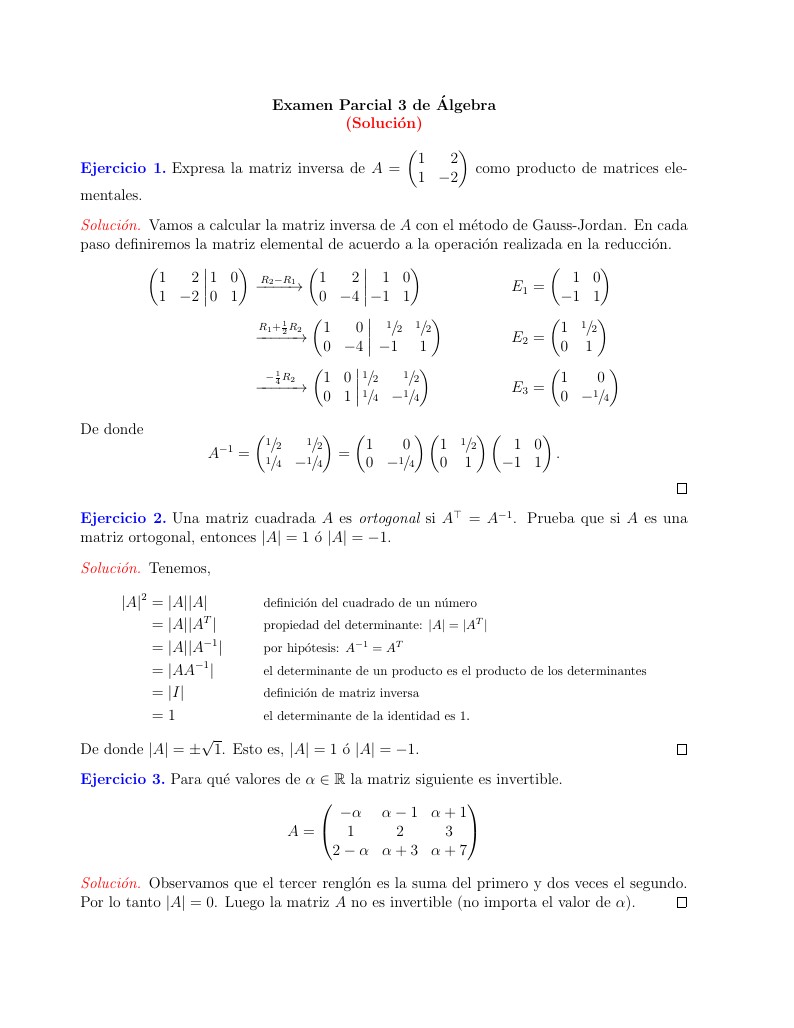
Solución al tercer parcial del curso de Álgebra para la licenciatura de Física, Facultad de Ciencias, UNAM. Semestre 2018-1
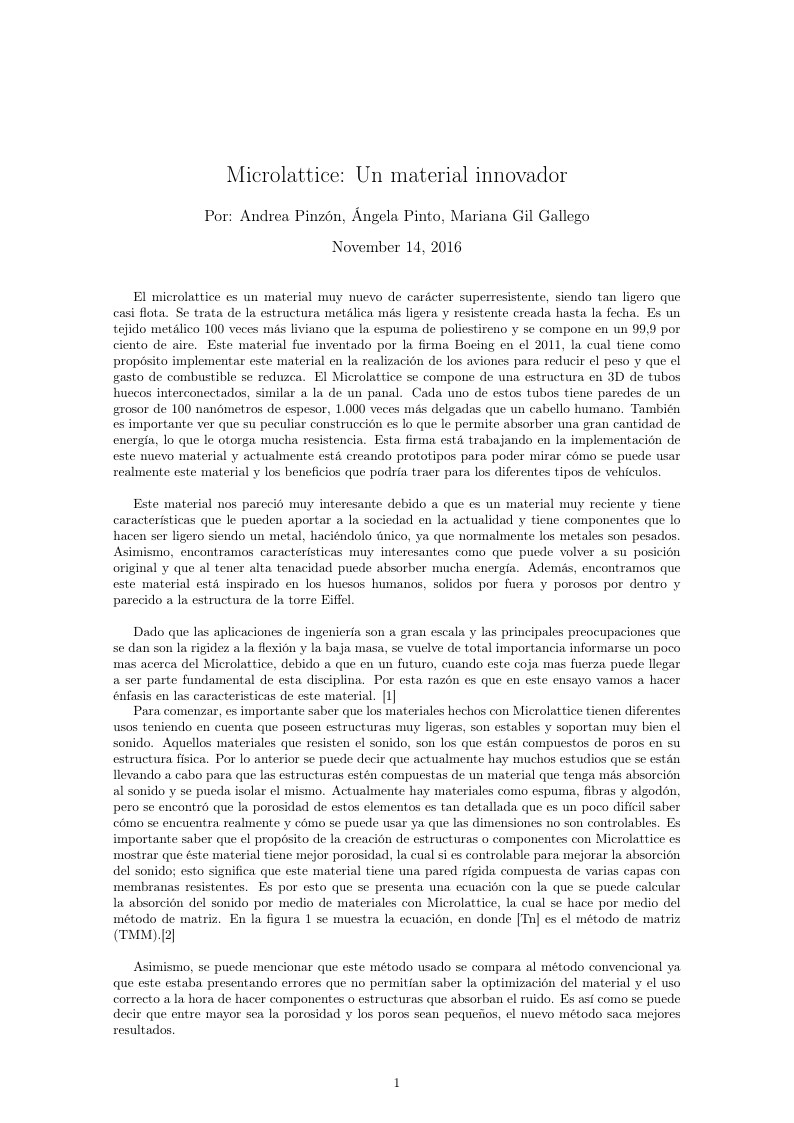
Microlattice

Faça um pêndulo leve com um pequeno ímã em sua extremidade. Um eletroímã adjacente conectado a uma fonte de corrente alternada de frequência muito superior à frequência natural do pêndulo pode levar a oscilações não-amortecidas com várias amplitudes. Estude e explique o fenômeno.
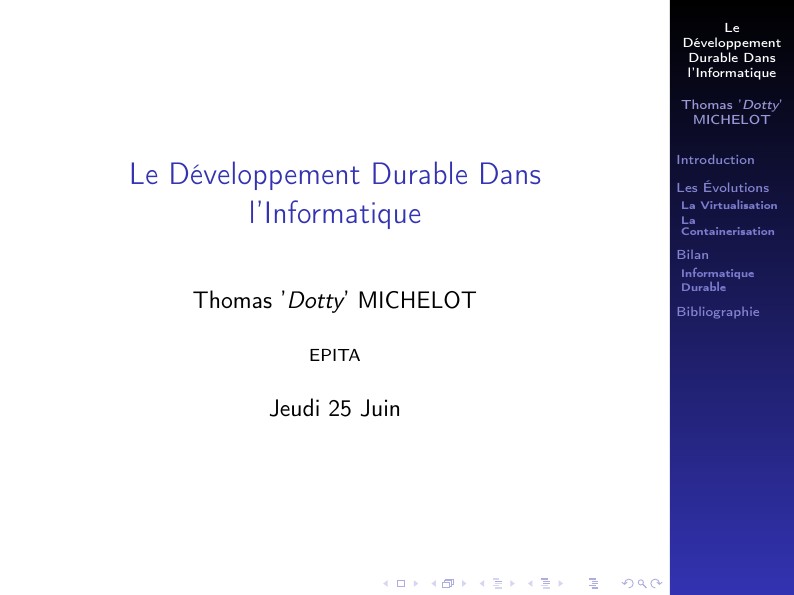
Short beamer to show how cat interact biotech and IT people
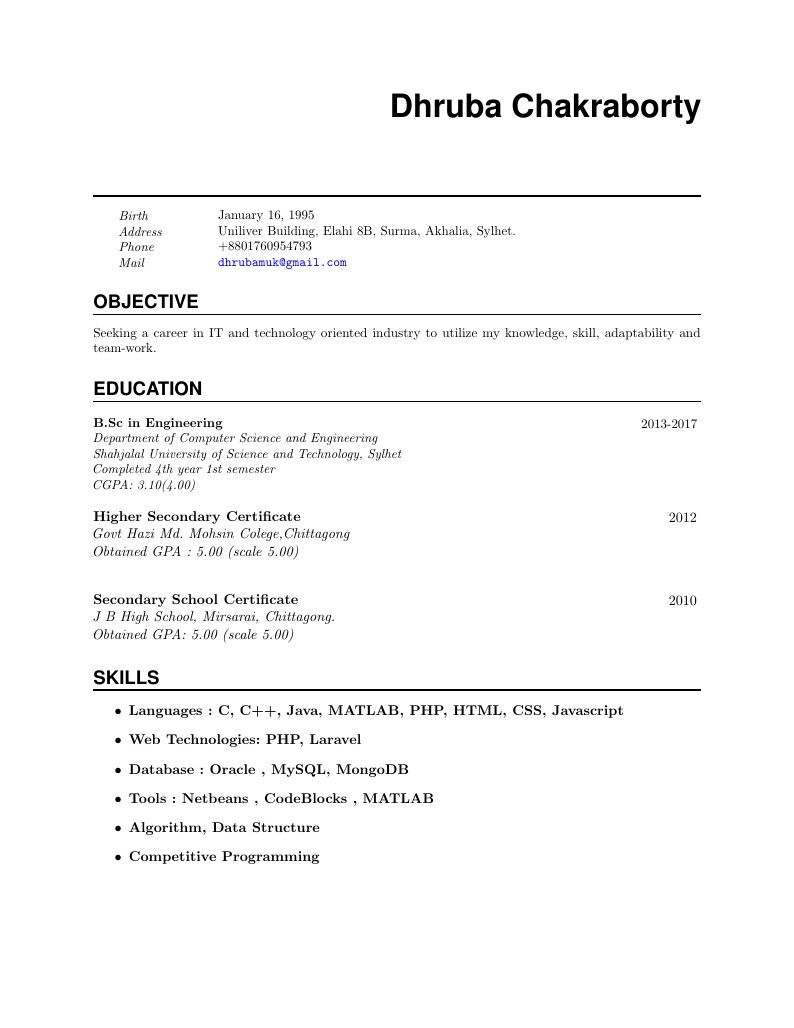
Dhruba Chakraborty's CV
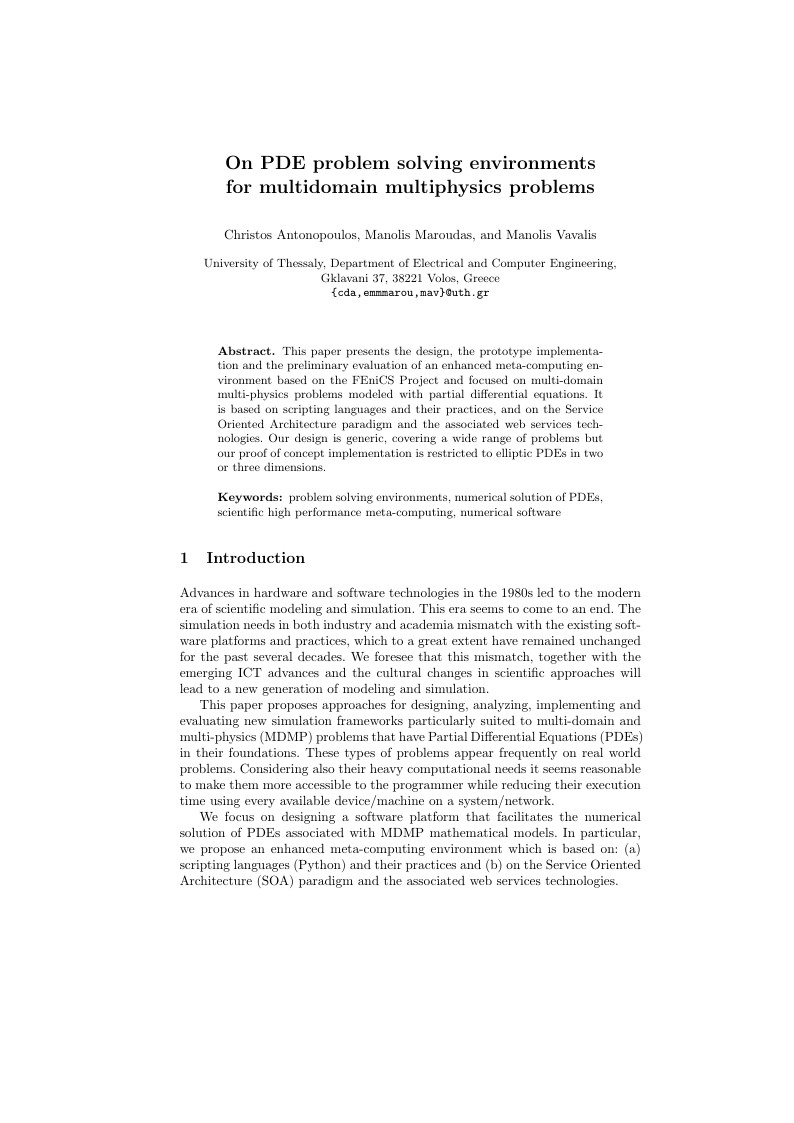
This paper presents the design, the prototype implementation and the preliminary evaluation of an enhanced meta-computing environment based on the FEniCS Project and focused on multi-domain multi-physics problems modeled with partial differential equations. It is based on scripting languages and their practices, and on the Service Oriented Architecture paradigm and the associated web services technologies. Our design is generic, covering a wide range of problems but our proof of concept implementation is restricted to elliptic PDEs in two or three dimensions.
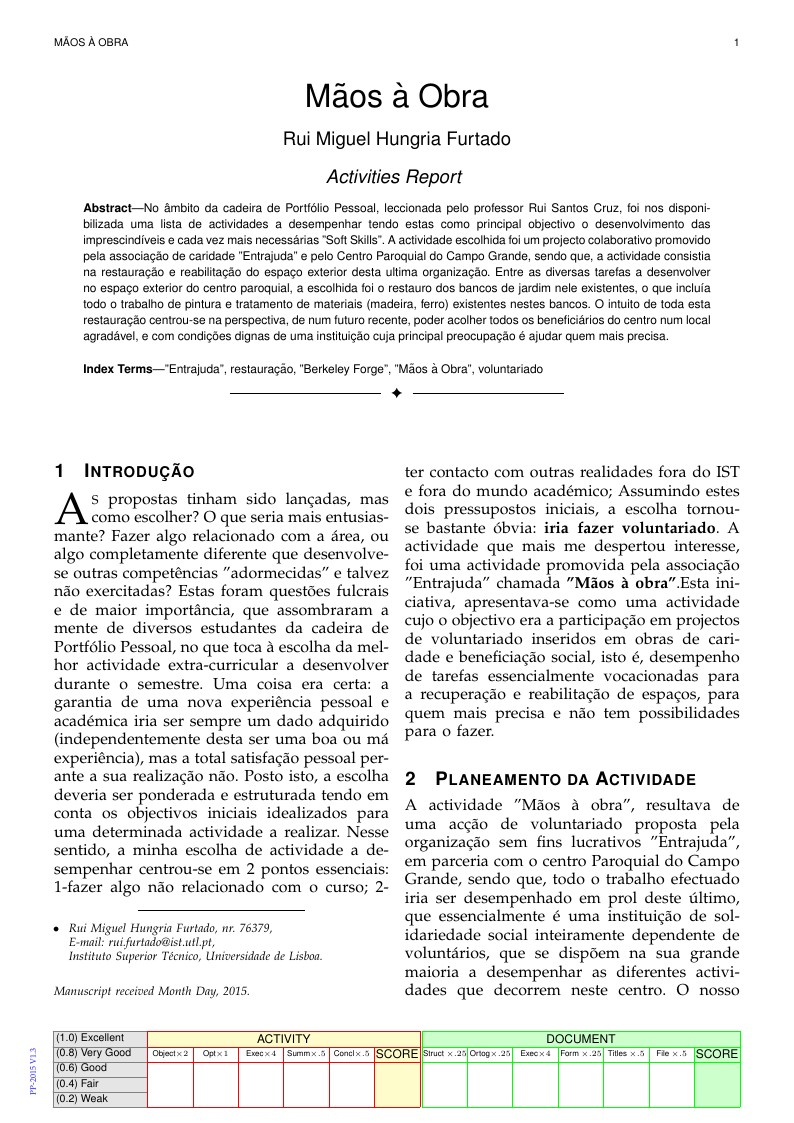
No âmbito da cadeira de Portfólio Pessoal, leccionada pelo professor Rui Santos Cruz, foi nos disponibilizada uma lista de actividades a desempenhar tendo estas como principal objectivo o desenvolvimento das imprescindíveis e cada vez mais necessárias "Soft Skills". A actividade escolhida foi um projecto colaborativo promovido pela associação de caridade "Entrajuda" e pelo Centro Paroquial do Campo Grande, sendo que, a actividade consistia na restauração e reabilitação do espaço exterior desta ultima organização. Entre as diversas tarefas a desenvolver no espaço exterior do centro paroquial, a escolhida foi o restauro dos bancos de jardim nele existentes, o que incluía todo o trabalho de pintura e tratamento de materiais (madeira, ferro) existentes nestes bancos. O intuito de toda esta restauração centrou-se na perspectiva, de num futuro recente, poder acolher todos os beneficiários do centro num local agradável, e com condições dignas de uma instituição cuja principal preocupação é ajudar quem mais precisa.
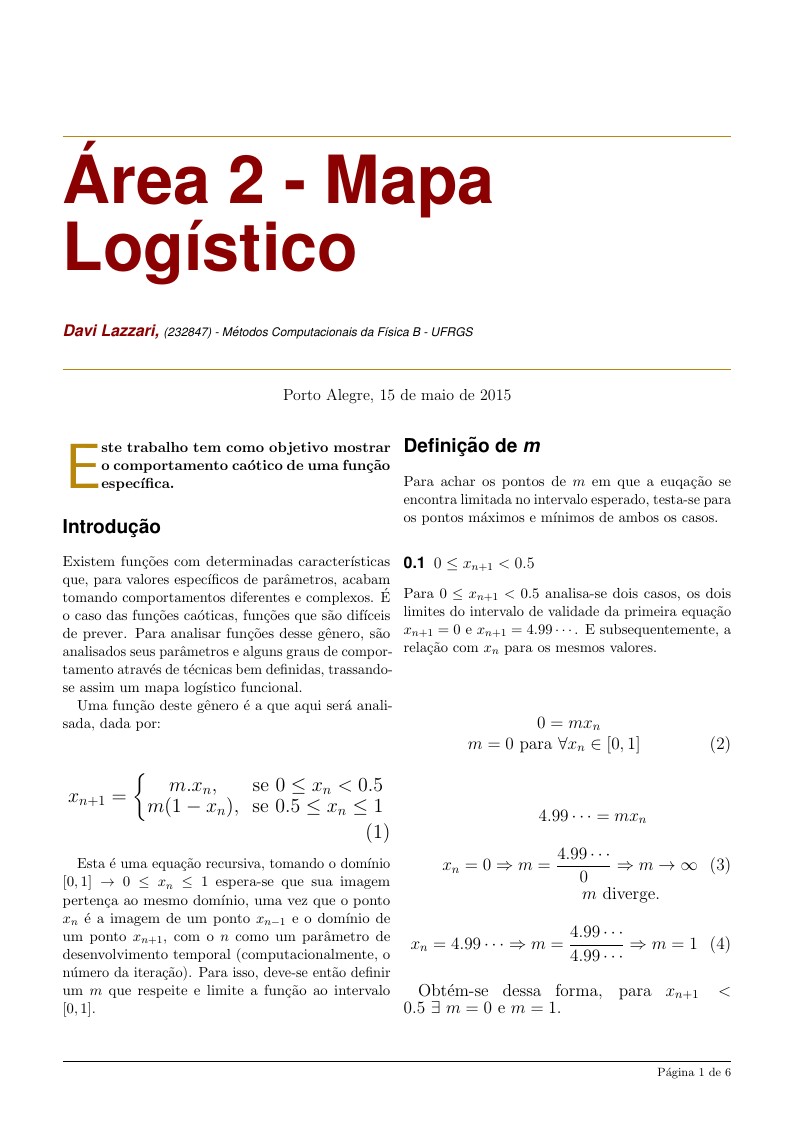
Análise de uma função específica caótica (Tenda), do gênero Mapa Logístico. Análise de caracteristicas como validade do coeficiente (m) para o intervalo, pontos fixos estáveis e instáveis (1ª e 2ª ordem) e coeficiente de Lyapunov.
\begin
Discover why over 20 million people worldwide trust Overleaf with their work.